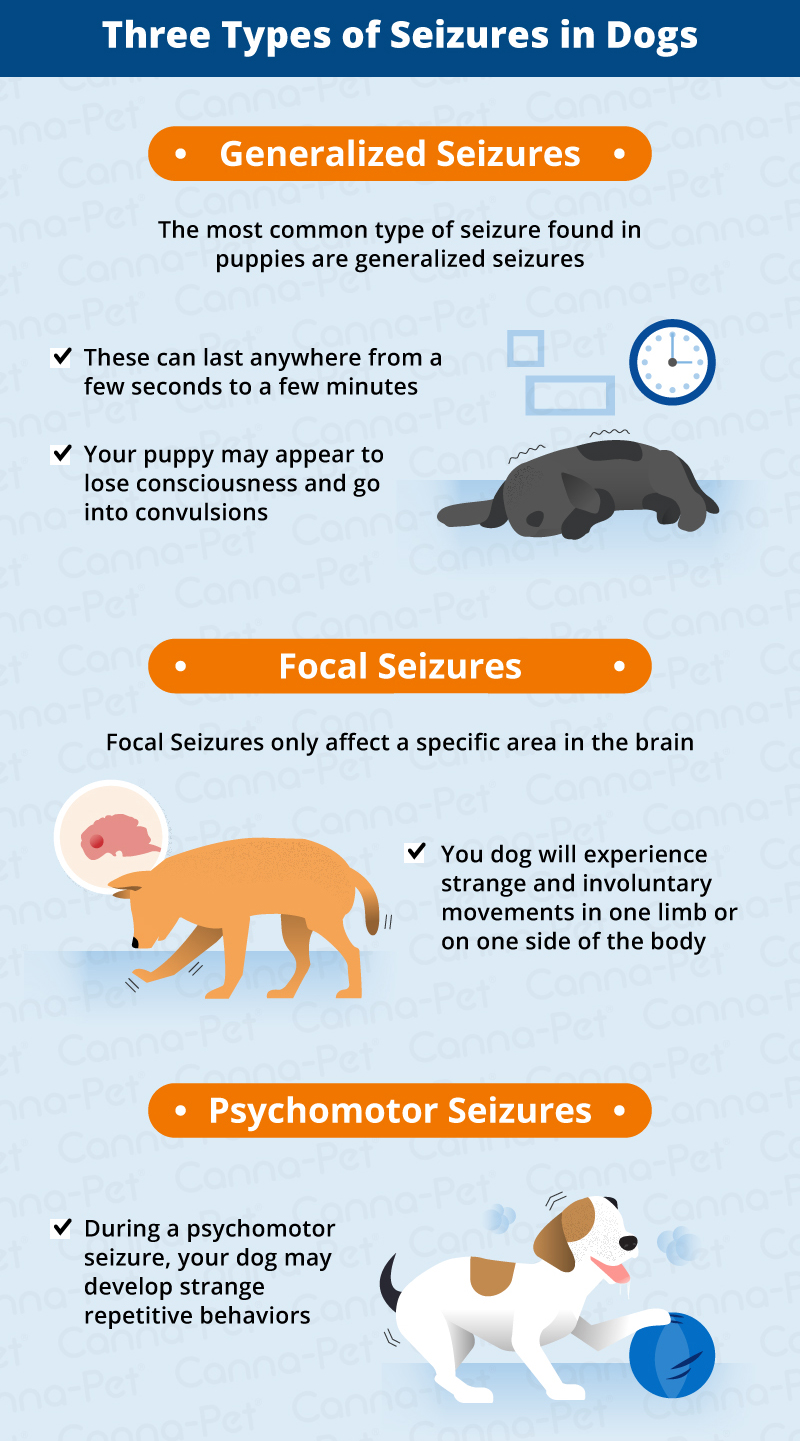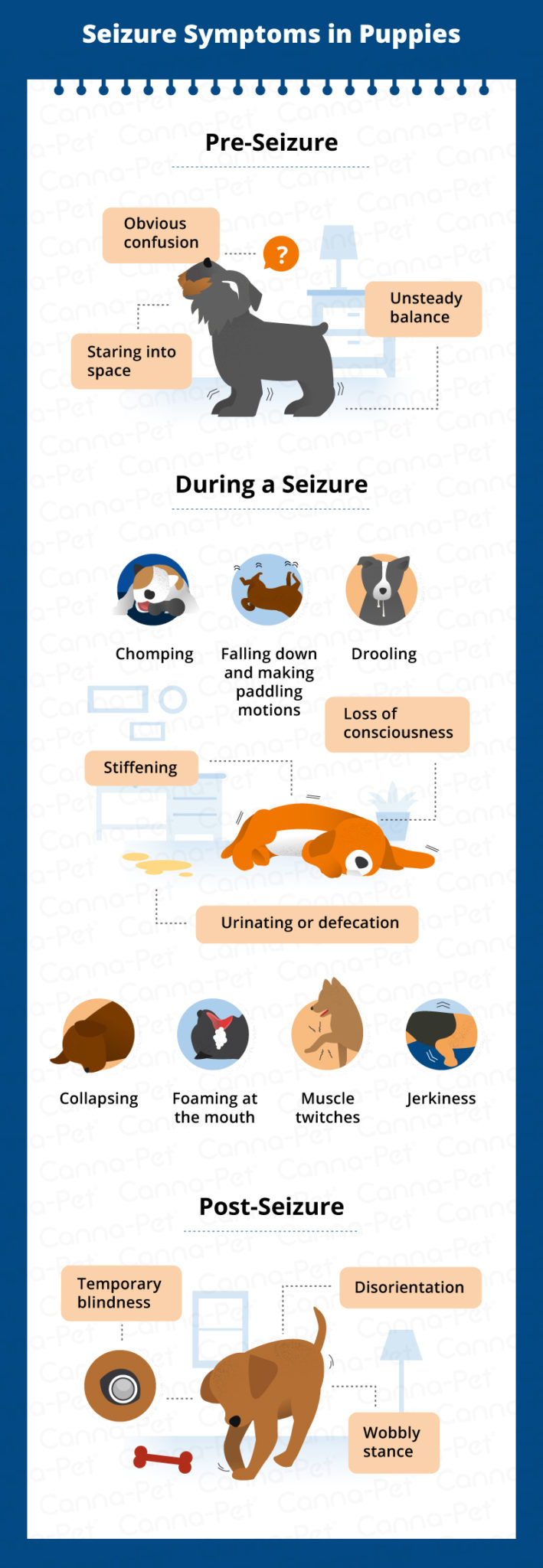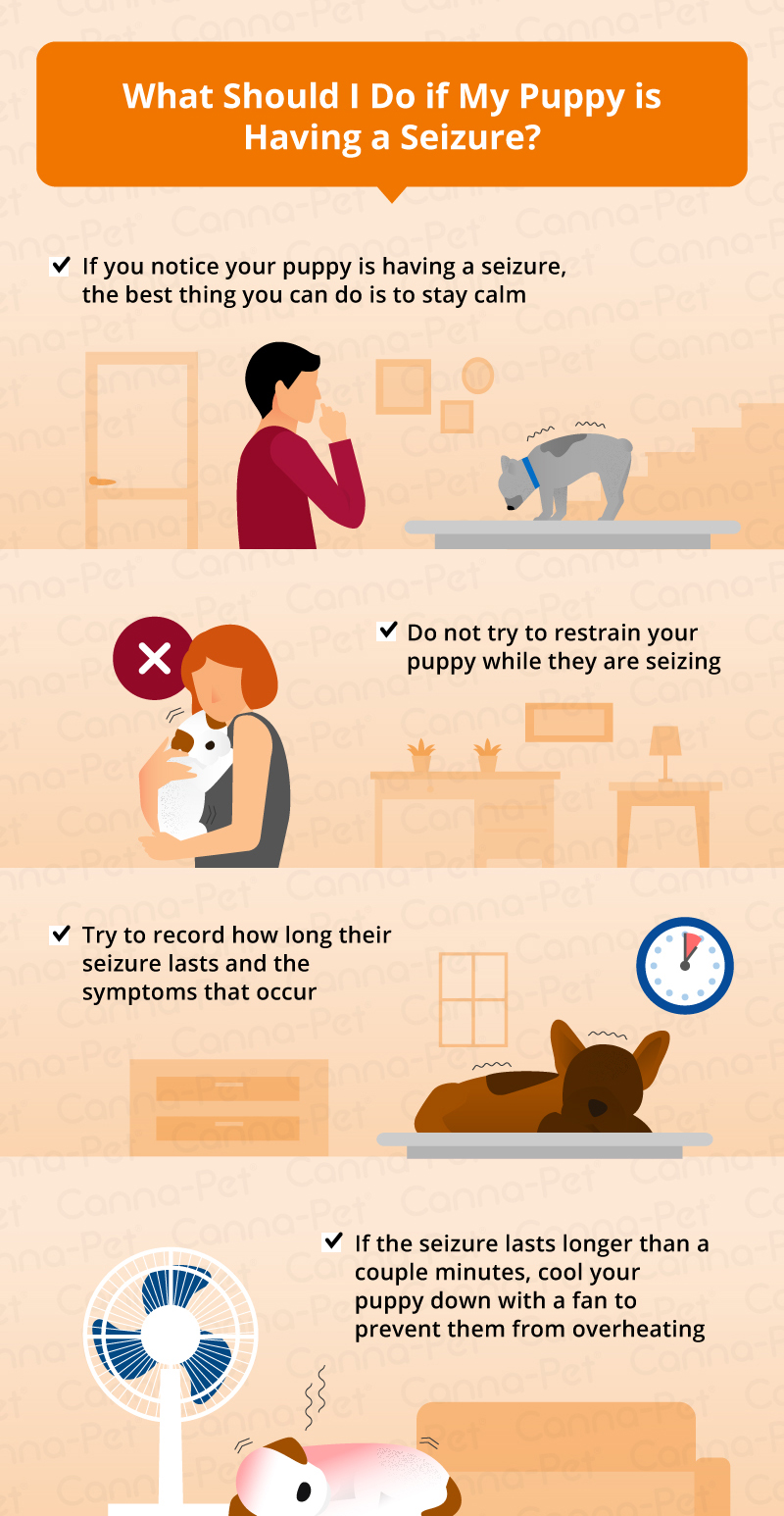One day your adorable new puppy is happily playing. Then something goes terribly wrong. Your fur baby appears to be unconscious, though he’s still moving. Your puppy is experiencing a seizure.
Dog seizures are a scary experience, and can be as traumatic for the pet owner as they are for the pet. If your puppy has them frequently, he may be suffering from epilepsy. But not all seizures are a sign of epilepsy.
Causes of Seizures in Puppies
There are a variety of reasons your puppy experience seizures. A seizure is a big deal. It’s critical to work with your vet to find out what caused your puppy’s problems so you can get proper treatment.
Common causes of seizures in puppies include:
- Epilepsy
- Stroke
- Brain cancer
- Encephalitis
- Anemia
- Kidney disease
- Liver disease
- Ingesting poison
- Blood sugar issues
- Head injuries
Types of Seizures in Dogs
Seizures occur when abnormal bursts of electrical activity in your puppy’s brain have serious effects on your dog’s behavior.
When there is no apparent underlying cause for a seizure, your dog may have idiopathic epilepsy. This can start as early as six months old, and is most common in certain breeds such as Border Collies, Poodles, and Belgian Tervurens.
There are three types of seizures found in puppies:

Generalized Seizures
The most common type of seizure found in puppies are generalized seizures. Generalized seizures can last anywhere from a few seconds to a few minutes. Your puppy may appear to lose consciousness and go into convulsions.
Focal Seizures
These seizures only affect a specific area of your pooch’s brain. They are easy to miss because they often only last a few seconds. Focal seizures may cause strange movements in one limb or one side of your dog’s body. Seizures can start as focal and move to generalized seizures.
Psychomotor Seizures
These may not appear to be seizures at all. During a psychomotor seizure, your dog may attack their own tail or start chasing things that aren’t there. At first you may even laugh them off as odd behavior. But a pup who has a psychomotor seizure will exhibit the exact same behavior every time it occurs.
Seizure Symptoms in Puppies
How do you know if your dog is having a seizure? While the type of seizure gives some clue as to your puppy’s symptoms, there are signs that can tip you off before the seizure actually begins or after one is over.

Pre-Seizure Symptoms
- Looking dazed
- Staring into space
- Confusion
- Unsteady on their feet
Post-Seizure Symptoms
- Temporary blindness
- Disoriented
- Wobbly
These symptoms may not be so apparent if you’re not playing with or paying direct attention to your puppy. When your pooch is in the throes of a seizure, you may notice one or more of these symptoms:
- Urinating or defecation
- Loss of consciousness
- Falling down and making paddling motions
- Foaming at the mouth
- Chomping
- Drooling
- Collapsing
- Muscle twitches
- Jerkiness
- Stiffening
What Should I Do If My Puppy Has a Seizure?
No matter how bad it looks, the first thing you need to do if your puppy is having a seizure is stay calm. Dog seizures don’t last very long, and though your puppy may appear to be in pain, they probably don’t feel a thing.

Reassure your dog with soft words and calming speech.
Stay away from your puppy, and even if they are chewing on their tongue, don’t put anything in their mouth. They cannot choke on their tongue. You are at danger of being bit if you get too close while they’re in this state.
When you notice your dog having a seizure, time it if possible. If it’s longer than a couple of minutes, put a fan on him and get some cool water for his paws. Overheating is a real danger if it goes on for too long.
After the seizure, call the vet.
Treatment for Seizures in Puppies
Your vet will do a physical exam and run a series of tests to determine the cause of your puppy’s seizure. Your vet may prescribe medication to help manage your dog’s seizures. However, it is important to note that some medications have harmful side effects that may do more harm than good.
Watching your puppy suffer from a seizure is heartbreaking. Make sure that you are prepared by understanding what a puppy seizure looks like, what to do during a puppy seizure, and how to help your puppy after he suffers from a seizure.

Sources:
- “Seizures in Dogs: Causes, Symptoms, & What to Do.” WebMD, Accessed 2 March 2017. www.pets.webmd.com/dogs/dog-seizure-disorders#1.
- “Seizures and Convulsions in Dogs.” PetMD, Accessed 2 March 2017. www.petmd.com/dog/conditions/neurological/c_dg_seizures_convulsions.
- “Seizures Are Scary: How to Help Your Pup.” The Spruce Pets, Accessed 2 March 2017www.thesprucepets.com/seizures-in-puppies-2804976.
- Clark, Mike. “Seizures In Dogs: Symptoms, Causes, & Treatments.” Dogtime, 6 Feb. 2018, Accessed 2 March 2017. www.dogtime.com/dog-health/55293-seizures-dogs-symptoms-causes-treatments.
- “What to Do If Your Dog Has a Seizure.” Petfinder, Accessed 2 March 2017. www.petfinder.com/dogs/dog-health/epilepsy-in-dogs-what-to-do/.





